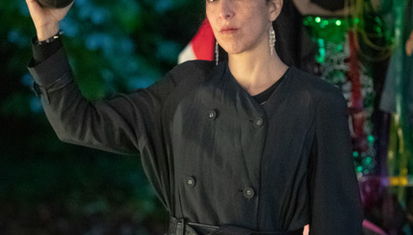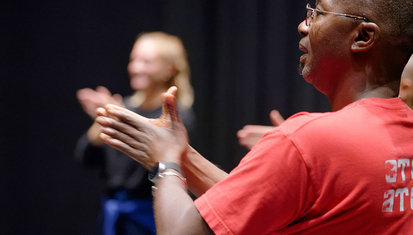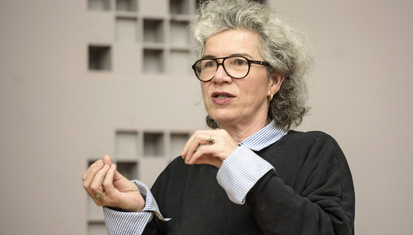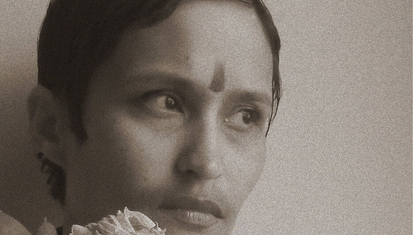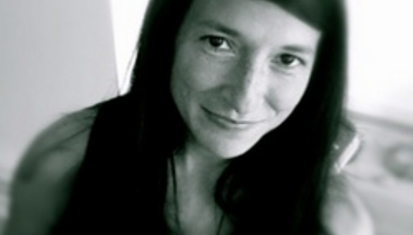It’s no secret that artistic research takes place at the Academy of Theatre and Dance, but what does it actually involve? In this eighth episode in a series of interviews, we take a peek behind the scenes, in conversation with visiting researcher: the Brazilian artist and socio-cultural articulator Eliara Queiroz.
Episode 8: Transitions
Eliara and I met at DAS Graduate School, while she was in Amsterdam for Afrotranstopia*, a research project developed by fellow Brazilian and DAS Choreography student Mario Lopes with support from the ATD Lectorate and Platform 2025. The concept of Aquilombamento, meaning ‘coming together’, is central to Mario’s work, and he brings together artists from both sides of the Atlantic who are connected by their African and indigenous roots. ‘Although we have been separated by colonisation, slavery and migration,’ says Eliara, ‘the deepest connections have not been broken. Afrotranstopia brings us together in one space, where we work with the history, the knowledge and the wisdom of our ancestors in a profound process that closely connects with my own artistic research in Brazil.’
Could you give me some background to your project?
My work is about relocation, displacement. I’m originally from north-east Brazil, and when I was 18 I migrated to the south-east, to Sāo Paulo. I’m not the only member of my family to have moved south to survive – actually the only one still living in my birthplace as my mother. I grew up in a community on the banks of the Amazon. I witnessed the advance of urbanisation there day after day, year after year, and the more big companies came to our area, the more precarious life became for us, as the community and family ties were destabilised. The lifestyle imposed on us led to violence at all levels of society, and to more or less forced migration as people went off in search of work or to escape threats, sometimes due to their gender or sexual orientation.
Is there a connection between discrimination of the LGBTI community and urbanisation?
Violence, transphobia and racism all have their roots in colonisation, and urbanisation has to do with colonisation. African and indigenous traditions and philosophies offer space for diversity, for trans and gay identity. These modes of thought were relentlessly corrupted by colonial actions, in just the same way as family and community ties are corrupted by the urban lifestyle. When people adopt an urban lifestyle and colonial behaviour, their core identity is more or less erased. But still, despite everything, ancient indigenous wisdom survives and thrives. One way of life can never be completely replaced by another, although the colonial mindset would have us believe otherwise – there are always different layers at every level overlapping each other.
How do these ideas find expression in your artistic work?
I work with dance, performance and visual art, and alongside that I’m a socio-cultural articulator. I observe the choreography of urbanisation and forced migration, and then try to expose these dynamics through art, education and political action. I bring together projects, initiatives and artists to explore what’s possible in the collective sense. The Brazilian socio-cultural network has collapsed over the last four years under Bolsonaro. There’s nowhere – no structure, no money – to do your work as an artist. It’s difficult for everybody, but if you’re Black, indigenous or trans it’s impossible. There are wonderful Black, indigenous and/or trans artists who are doing profound and important research, but they’re having to spend their days figuring out how to survive, how they’re going to find the money for rent and food. I try to create the right conditions for them through my role as a socio-cultural articulator. I’ve been to university, so I speak the language and understand the power structures. I’m able to apply for residencies, go to festivals and connect with artists and organisations abroad – as I’m doing now with Mario Lopes and DAS Graduate School.
Am I right in thinking you do all this in Brazil without any money?
This work is all about affection, about caring. We need each other. We want to work together, exchange ideas and do artistic research, but sometimes you just have to stop right in the middle of a process and go look for work. Create, stop, create, stop…that’s the dynamic at the moment. We keep on having to start all over again.
Could you tell me a little about your research process?
My work is about trying to find a route back to the knowledge and wisdom of my ancestors. In Brazil, educational programmes and art practices all operate from a European, Western perspective. I’m looking into how to make dance, visual and performance work while setting aside the language of neo-colonialism. I’m looking at how to work from a non-Western perspective.
Do you even know where to start?
No, I never do. And that’s precisely what’s interesting about it. It’s my body that shows what direction I should take.
Do you believe that the knowledge of your ancestors is still present in your body?
Absolutely. Yes. When I moved to Sāo Paulo and went to university I had to forget all about my roots. I needed to function and think differently within this new world. Now I’m attempting to go back, using my body and my memories. I remember our communal garden, the medicinal plants. I remember how if I had a cold my mother would crush ginger, mix it with water and leave it outside all night, in the nocturnal energy. The next morning she’d give me a ginger shower. She’d learned it all from my grandmother, who in turn learned what she knew from her mother. I lack the knowledge but I do have my experiences, and I’m using them now to gain access to my ancestors, to get to know them. I’m asking where all the knowledge and wisdom comes from.
As part of this process I found I wanted to make drawings of the medicinal plants, using flowing, continuous strokes. I started about five years ago and I’m still doing it. Initially, I had no idea where this urge came from, or where drawing in this way would lead me. I also became interested in my hands – I observed the lines on my palms, but didn’t realise until later that this was in fact a spiritual act. I thought: My god, my grandmothers could read the future in people’s hands and although they never taught it to me it still resonates in me like an instinct. My body is finding a way to regain something – it’s remembering something that looked like it had been lost.
And that’s a path you dare to follow?
Sure, but it’s not always easy. My grandmother now refuses to read hands, for example, because it’s not modern, not European, not white. It’s like that access route has been completely blocked off. I believe art is the ideal tool for regaining access. Art goes hand-in-hand with great sensitivity, with listening attentively to your body, to other people, to the space around you.
I’m wondering, did your drawing of plants ultimately develop into movement?
Yes, it was this research that ultimately led to a dance piece in three parts that you can watch in any order. You can see one part one evening and another the next. For me it’s all about the movement, the transitions – the transitions in my work, my country, my body and my gender. I was told from birth that I was a boy, but I discovered I wanted to move, to change, to make transitions. I walk, walk, walk, look, look, look [Eliara illustrates these words with graceful movements]. See how my body changes with each step, how the movement travels through my hands, my spine, my head, and the space. I’m exploring how to stay in a state of transition – between dance, performance and visual art, and from art to education to politics.
*Afrotranstopia is supported by the ATD Lectorate DAS Research and Platform 2025.
Text and interview: Hester van Hasselt



